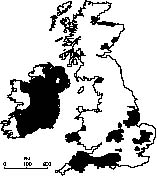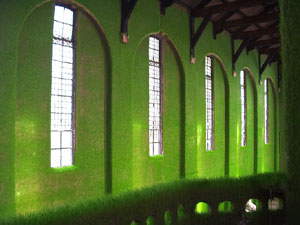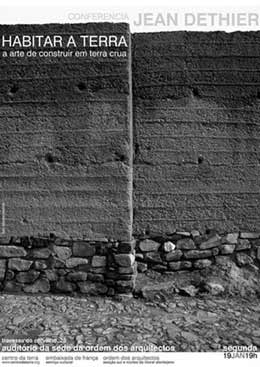To coincide with launch of the new publication Rammed earth: design &
construction guidelines, a one-day conference on rammed earth construction
is to be held on Wednesday 9th February 2005 in the Department of Architecture & Civil Engineering at the University of Bath.
The conference will examine historic and modern use of rammed earth in the
UK and Europe, practical issues of construction applications, material
testing and selection, formwork and construction, engineering design,
architectural design and detailing, maintenance and repair of walls. The
workshop is open to architects, engineers, designers, building surveyors,
construction companies, property developers, researchers and interested
individuals.
Issues for discussion will include thermal performance, durability, material
strength, cement stabilisation, building control, quality testing and wall
finishes. Case studies from recent rammed earth projects in the UK and
Europe will be presented. Findings from recent research work will also be
outlined. The workshop will also include an exhibition and practical
demonstration of rammed earth construction.
Rammed earth: design & construction guidelines is the result of a DTi
sponsored research and innovation programme investigating the potential of
rammed earth for new construction.
Conference speakers include:
Martin Rauch, Baukunst GmbH
Lars Allan Palmgren, Architect
Rowland Keable, Insitu Rammed Earth Co. Ltd
Pat Borer, Architect
Gordon Pearson
Tom Morton, ARC Architects
Andy Simmonds, Simmonds-Mills Architect Builders
Mark Lovell, Mark Lovell Design Engineers
Jonathan Hines, Architype
Mark Swenarton, Architecture Today
Peter Trotman, BRE
Paul Ellis, Ecology Building Society
Joe Martin, JM Architects
Steve Goodhew, University of Plymouth
Peter Walker, University of Bath
To reserve a place please: email P.Walker@bath.ac.uk, telephone 01225
386646, or fax 01225 386691. Alternatively send your name and contact
details to Peter Walker, Department of Architecture & Civil Engineering,
University of Bath, Claverton Down, Bath, BA2 7AY, UK. Download the conference brief in .pdf format.
Preliminary programme:
Registration 8.30 AM
Opening presentations (Introduction; Historical bakcground; Applications;
Materials): 9.00-10.45 AM
Coffee break: 10.45-11.15 AM
Presentations (Construction; Design; Maintenance & Repair): 11.15 AM – 12.45
PM
Lunch: 12.45-2.00 PM
Presentations (Case studies I): 2.00-3.20 PM
Coffee break: 3.20-3.45 PM
Closing presentations (Case studies II; Research work) and discussion:
3.45-5.00 PM
Full day registration fee: £105.00
Concessionary registration fee: £80.00 (AECB members; full-time students)
Morning or afternoon half-day fee (without lunch): £65.00 (£50.00 conc.)
Registration includes a copy of the Rammed earth: design & construction
guidelines.




